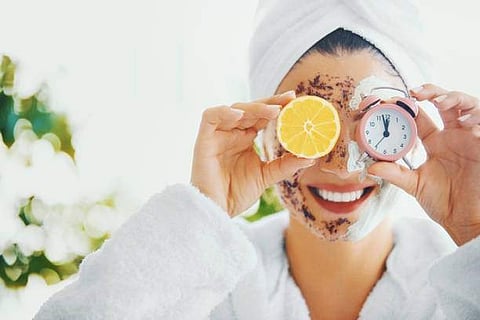
- LIFESTYLE
- FASHION
- FOOD
- ENTERTAINMENT
- EVENTS
- CULTURE
- VIDEOS
- WEB STORIES
- GALLERIES
- GADGETS
- CAR & BIKE
- SOCIETY
- TRAVEL
- NORTH EAST
- INDULGE CONNECT

Summer has arrived and the scorching heat has become a concern for our skin. It's time to dive into a fresh summer skin care routine to minimize or rather fight against the sun damages, and components like AHA (Alpha Hydroxy Acids) and BHA (Beta Hydroxy Acids) can actually act as a boon for our skin. As celebrity cosmetolgist Dr Monica Kapoor says, "Besides tan removal, skin rejuvenation and bestowing a radiant glow to your skin acts as a catalyst when it comes to skin exfoliation."
Monica says that some natural sources containing AHAs and BHAs can be helpful in this regard.
She says a few sources of natural AHA includes the following:
Citric acid: Citric fruits such as bitter orange, lemon, pomelo, key lime, citron, yuzu, Persian lime.
Tartaric acid: It is an organic acid found in berries, red wine, grapes, papaya, peach, pear, banana, honeysuckle, and passion fruit.
Malic acid: Apples, cherries, watermelon, carrots, and broccoli.
Gluconic acid: Honey, sugarcane, and corn
Lactic acid: Yoghurt, milk, butter, bakery goods, pickled vegetables
The main source of BHA, is salicylic acid which occurs naturally and is used as an acid peel in cosmetics. Some natural sources of BHA are Wintergreen leaves, papaya, sweetbirch, and dairy products such as milk, yoghurt, and butter.
However, water soluble acid AHA and oil soluble BHA is found naturally and should be used as per one's skin requirements. Dermatologist Dr Anupama Bisaria suggests those with oily skin should exfoliate their skin twice or thrice a week with AHAs and BHAs like glycolic acid. However, ones with dry skin should go for rather mild exfoliation like lactic and mandelic acid twice a week. She adds, "Always layer your skin with moisturiser as per your skin type. Due to exfoliation, the absorption of moisturiser is better and it nourishes the skin deeply, keeping it hydrated. Use lightweight water-based moisturiser during the day but stick to ceramide, peptide and hyaluronic-acid-based moisturiser at night when your skin heals and breathes."
Dermatologist Dr Nivedita Dadu also tells that AHAs and BHAs are humectants that pull moisture from its surroundings so the skin should be well-moisturised while using it. Also, natural sources of AHAs and BHAs are milder as compared to the store-bought components.
During this sweltering season, eating seasonal fruits and vegetables not only adds to health benefits but also feeds our skin from within, according to Dr Bisaria.